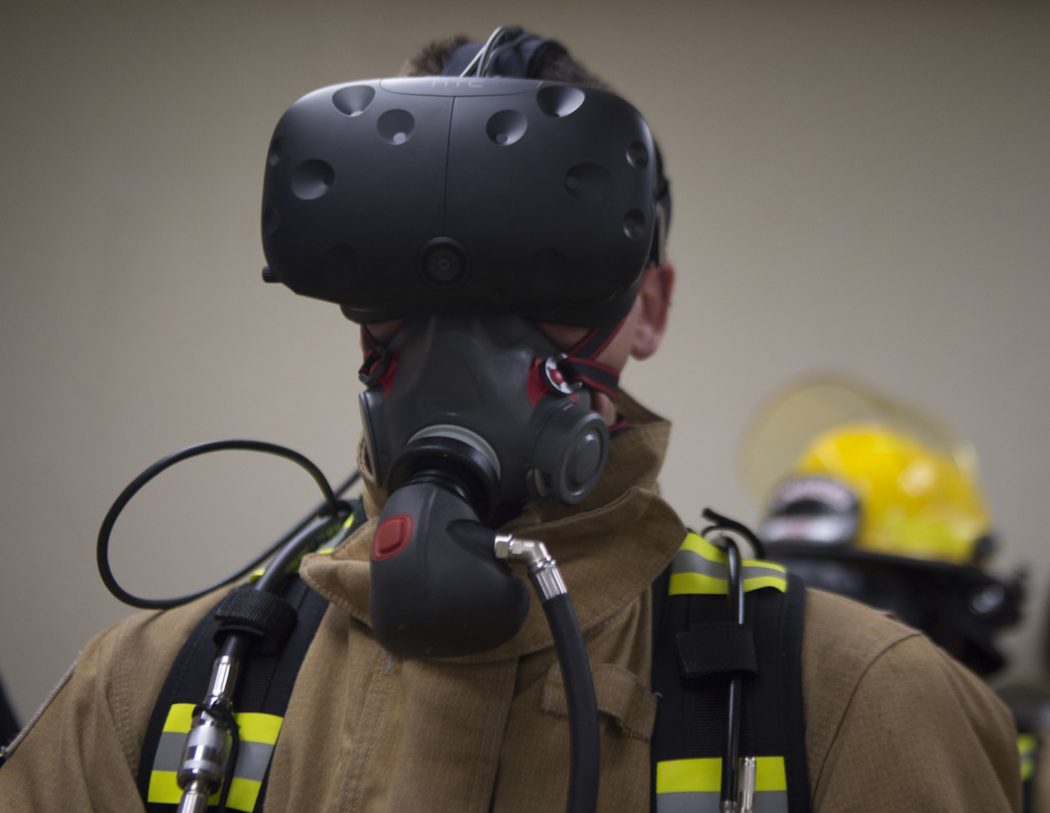Oftentimes when people hear about virtual reality technology, they think of video games or movies. Though it was initially largely used for entertainment purposes, today, VR is being used for “immersive learning,” a phenomenon wherein VR tech is employed to simulate scenarios and train employees in a way that presents no harm to company property or themselves. In doing so, allegedly, knowledge retention can be increased, risks can be eliminated, and learning outcomes can be improved.
“In doing so, allegedly, knowledge retention can be increased, risks can be eliminated, and learning outcomes can be improved.”
One area where this is being applied is tackling active shooter situations. In response to its rising incidence in the United States, companies are taking it upon themselves to better train their employees in preparation for such cases. In 2018, for example, Verizon contacted Strivr, a VR software training company, to develop modules that could train store managers to handle armed robberies in a way that would place trainees in a safe environment whilst giving them the opportunity to develop their decision-making skills and reaction times. Following this training, 95% of trainees felt more prepared to handle dangerous situations.
Likewise, software companies are beginning to develop their own VR-based “Active Shooter Response” training programs to distribute amongst interested employers. Two of these companies include Seattle-based Pixvana and Alexo, who have partnered together to create one such program in an effort to improve situational awareness and overall readiness.
“‘Virtual reality is the future of workplace learning and development,’ asserts Pixvana COO Rachel Lanham.”
“Virtual reality is the future of workplace learning and development,” asserts Pixvana COO Rachel Lanham. “This particular project has great meaning for us – everyone, including our own team, knows someone touched by [gun violence] in some way. We hope that through this video, we can prepare employees for violent situations, help them make quicker decisions, and potentially save lives.”
Outside of retail workplaces, VR is also being used to improve training amongst police forces. The Cornwall Police Services in Ontario, for instance, employed VR technology for the first time this past February to facilitate force and firearms instruction. Through these simulations, officers were able to practice handling firearms, firing virtual bullets, and de-escalating potential violent scenarios, all whilst knowing they would be completely unharmed.
Additionally, fire safety departments are also beginning to adopt VR usage. In Australia, for example, fire departments have begun partnering with Australia-based FLAIM Systems to immerse trainee firefighters in real-life situations too dangerous to recreate, using simulations of smoke, fire, water, and fire-extinguishing tools in projected environments such as houses, aircrafts, and forests. As well, to further enhance realism, electronic suits have been allowing trainees to experience changes in temperature in relation to the wearer’s proximity to simulated fires.
“…comments Julie Rider, fire department captain. ‘It was amazing to experience the inherent risk, extreme danger, and fire intensity without feeling any of the dangerous effects from the fire.'”
“I could feel my heart rate climb as I looked around the room, seeing where the fire started, watching the rapid rate of fire spread,” comments Julie Rider, fire department captain. “It was amazing to experience the inherent risk, extreme danger, and fire intensity without feeling any of the dangerous effects from the fire.”
More recently, VR training has been finding itself employed in the medical field. While medical technology has been rapidly advancing, surgical training and assessments have been lagging behind, leaving doctors unprepared for complicated surgeries and procedures. This ubiquity of inexperience becomes even more concerning when considering the continuingly increasing complexity of surgeries and the alarming discrepancies occurring between surgeons based on opportunities offered during residences. With virtual reality training, however, these skills gaps can be reduced by offering more occasions to practice different procedures and familiarizing surgeons with new technologies in a consistent and standardized way.
In practice, VR’s effectiveness is appearing to be consistent with these assumptions. According to a study at UCLA’s David Geffen School of Medicine, VR training had improved participants’ surgical performance by 230% in comparison to traditional methods, with VR-trained individuals being evaluated as generally faster, more accurate, and all-around more skilled.
While at one point it had been believed that virtual reality technology would be just a temporary fad, it has now demonstrated itself as a powerful educational tool. Posing many advantages such as increased accessibility, faster training times, and lower resource consumption compared to traditional training methods, VR training is indeed revolutionizing the way in which employees are being trained, and it should come as no surprise should you hear about it in your field soon, too.








